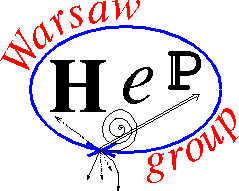SEMINARIUM FIZYKI WIELKICH ENERGII
Dnia 29 maja (piątek) o godzinie 10:15, odbędzie się seminarium, na którym zostanie wygłoszony referat pt.:
Prospects of searches for long-lived SUSY and doubly charged particles with MoEDAL experiment
Referuje: mgr Rafał Masełek (IFT)
Abstract:
The Monopole & Exotics Detector at the LHC (MoEDAL) is a small experiment designed to search for highly ionising avatars of a New Physics. Its main goal is to study the possible existence of magnetic monopoles, but the physics program defines over 34 distinct scenarios, targeting extra dimensions, new symmetries, topological particles and Dark Matter.
Currently, MoEDAL experiment is being upgraded to prepare for Run-3 data taking period. In my talk, I present the prospects of searches for New Physics after the upgrade. I discuss detection reach for various types of long-lived Supersymmetry and doubly charged particles, and I compare it to the results by ATLAS and CMS.
Serdecznie zapraszamy
dr hab. Katarzyna Grzelak
prof. dr hab. Jan Królikowski
prof. dr hab. Aleksander Filip Żarnecki
The meeting will take place on zoom.us platform.
Zoom meeting link: https://zoom.us/j/176261850
https://us02web.zoom.us/j/176261850?pwd=cWgzMkwvVjBTSm5ObTFMSnBPTndIQT09
Zoom meeting ID: 176 261 850
Password: 8z2bfx

